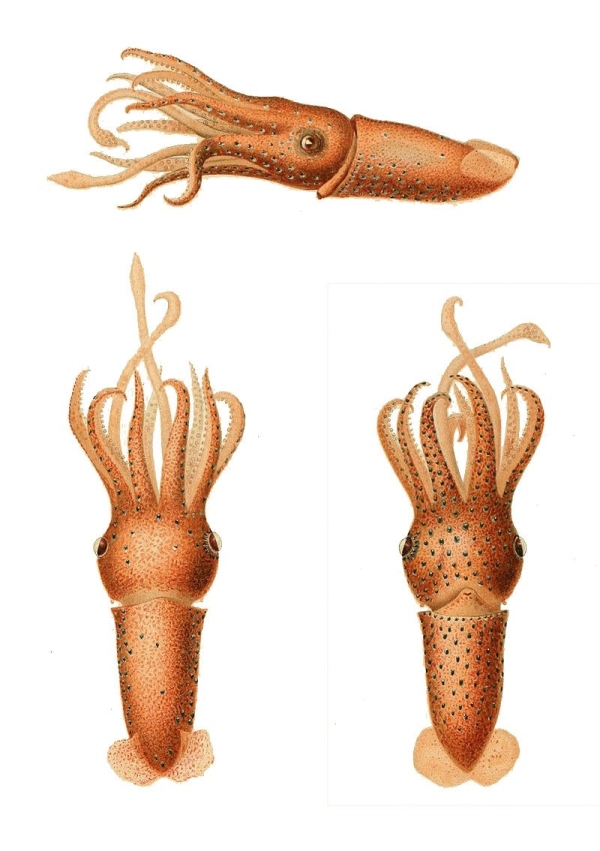The squid genus Histioteuthis is commonly known as the violet or cock-eyed squid.
Their right eye is small, blue, and sunken into the head, while their left eye is twice that size, bulging out of the top of the head. It is thought that the left eye looks above for prey and food, while the right eye looks downwards for other bioluminescent signals.
Bioluminescence
Histioteuthis squid inhabit the deep waters around New Zealand at depths ranging from 300 to 1400 m. Like 80% of the species found in the deep sea, the Histioteuthis genus produces bioluminescent light through photophores- which utilize the compound luciferin, from the digestion of prey, to power light producing mitochondrial cells called photocytes. Even their bulging eye fluoresces! When not lit up, they are generally a dark red or violet color and have a mantle that is relatively small to the head.
The Histioteuthis genus
The Histioteuthis genus has many amazing species within the classification. Once such is example is the strawberry squid, which is covered in seed-like speckles (much like a strawberry) that are actually light producing photophores used for camouflage.
You can find more information and images on the strawberry squid on the link below:
Monterey Bay Aquarium Institute - a new visitor form the deep
Another interesting species of the Histioteuthis genus is Histioteuthis reversa (Verrill, 1880). Known commonly as the reverse jewel squid or the elongate jewel squid. The underside of its mantle has a scattered arrangement of different sized photophores, including seventeen larger and one smaller photophore surrounding the right eye. The left eye is ringed by seven larger photophores and a further 10 – 14 smaller photophores.
NIWA’s collection
There are currently eight different species of the Histioteuthis genus in our collections, but colleagues up at Auckland University of Technology are working on developing new descriptions of species in this genus this year.
Further information
Want to delve deeper into the world of bioluminescence? Check out the interesting links below.
An interesting video clip of the strawberry squid doing what it does best!
References:
http://www.sciencefriday.com/articles/picture-of-the-week-cock-eyed-squid/
http://montereybayaquarium.tumblr.com/post/90078073983/we-have-a-new-visitor-from-the-deep-in-our
Our blog today was guest written by Annie Hale, an intern from Colorado College, USA, working at NIWA Wellington this month as part of the HECUA programme.


